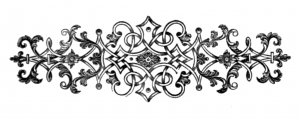How to Write Vivid Character Descriptions: Be Invisible!
One of the most difficult areas of description is when it comes to showing the appearance of a protagonist, especially when writing in first person POV. We need readers to “see” our protagonist, but how do we deliver description that feels natural and active? Luckily my friend Nola Sarina, Author Extraordinaire, is here with terrific advice on using Voice & Being Invisible to convey details not only about the main character, but the rest of a story’s cast. Please read on!
 Most authors have encountered the advice: “Avoid the dreaded mirror scene!” Why? Because using a mirror to describe your main character is a crutch upon which many authors rely to give their readers a visual snapshot of the characters in a book. But giving a snapshot not only interrupts the flow of a scene, it also reminds the reader that an author wanted them to see something. To make an authentic, deeply-connected bond between reader and character, the author must immerse the reader in the character’s voice and stay out of the character’s way.
Most authors have encountered the advice: “Avoid the dreaded mirror scene!” Why? Because using a mirror to describe your main character is a crutch upon which many authors rely to give their readers a visual snapshot of the characters in a book. But giving a snapshot not only interrupts the flow of a scene, it also reminds the reader that an author wanted them to see something. To make an authentic, deeply-connected bond between reader and character, the author must immerse the reader in the character’s voice and stay out of the character’s way.
Image via @Jill111 @ Pixabay
So how do you stay out of the way and give your reader a vivid, visual connection with your characters, without interrupting the flow of the moment?
Physical description of a character only matters if your character has a reason to acknowledge it. Your main character will likely notice the thick, curly red hair of the girl she has a crush on. But will she notice her own straight, faded-red hair and her clothing choice of the day? Not likely, unless it directly applies to the moment. Even then, it must be laced into the scene in a delicate way so the reader does not recognize the author’s desire to show the character’s appearance.
So how can you get visual imagery across without resorting to a mirror or forced-feeling self-observations?
Take a look at this passage, which features a very common, yet disengaging, pattern of physical description:
I tried to keep my cool, tossing my long, faded-red hair over my shoulder as the popular but judgy Sarah raked her critical glare over me. Her freckles wrinkled along the bridge of her nose. Wearing black leather pants and a black tank top, I was a stark contrast to her blingy, Barbie-pink look.
When I am faced with an apprehensive encounter, I don’t often think about the fact that my hair is faded, or red, or long. I just toss my hair. I might try to convey a certain attitude with the motion, but I don’t think about the color or the length until it applies to the moment. I also wouldn’t make clear-cut observations about my antagonist’s popularity (though the reader absolutely needs to know these things) because these observations are largely situational and intuitive. The same is true for my and outfit or surroundings. In a situation where I don’t fit in, I’m focused on the reactions of those around me—or my own reaction to their apprehension—not the colors, sizes, or styles.
So while this example isn’t wrong, it interrupts the action of the scene to give your reader a snapshot-view of the characters in the author’s voice before moving forward. It’s a bit like saying, “Look at these characters and then I will show you what they do.” But to seamlessly integrate the description and the action in a continuous flow, the author shouldn’t say anything at all. Rather, the main character says, “Come with me, let’s go!” and flows right into the story without reminding the reader that it was once imagined and written by someone else. The author should be invisible every step of the way.
Don’t use description dumps to give your reader a chance to see the appearance of your character. Instead, give your character a chance to show their appearance to your reader through voice and action.
I tried to keep my cool, tossing my hair over my shoulder. But a long, faded-red strand swung too far around my head and whipped me in the eye, earning a smirk from Sarah as she raked her critical glare over my figure. Her friends, sparkling like Barbie’s closet in pinks and bling, moved in to form a half-circle around me, reeking of popularity and judgement.
“What is this, the Goth Club?” Sarah said, wrinkling her freckled nose at my all-black-and-leather look.
This way, your reader still has a sharp, vivid picture of every character in the scene (including the main character), and sees these things as they happen—as they matter—rather than pausing to study a snapshot of characters in the scene first.
Making sure that your character is the one who tells the story, not you, keeps your author voice out of the way, and allows your readers to immerse completely into the experience of the character. By becoming an invisible author, you encourage your readers and your characters to connect on an intimate, authentic level through the journey they take together.
 Nola Sarina lives in Southern Alberta, Canada with her husband and three children. Born in Minnesota and raised to appreciate reading and writing of all types from an early age, she found her favorite titles within the genres of dark fantasy, science fiction and romance. She is the author of the dark fantasy romance Vesper series, and also writes paranormal romance and erotica with co-author Emily Faith. Please stalk her on Facebook and Twitter!
Nola Sarina lives in Southern Alberta, Canada with her husband and three children. Born in Minnesota and raised to appreciate reading and writing of all types from an early age, she found her favorite titles within the genres of dark fantasy, science fiction and romance. She is the author of the dark fantasy romance Vesper series, and also writes paranormal romance and erotica with co-author Emily Faith. Please stalk her on Facebook and Twitter!
A woman’s memory returns when she falls in love with the monster who took it from her.
Jaded Touch
It took three scars to break her, and two men to save her…
Phantom Nights
Release Date TBA
The darkness Samantha’s faced in her life pales in comparison to what she’ll face to save the demon she loves.
Do you try to be an invisible author? What do you struggle with most when it comes to writing character description? Let us know in the comments!
The post How to Write Vivid Character Descriptions: Be Invisible! appeared first on WRITERS HELPING WRITERS™.
Writers Helping Writers
- Angela Ackerman's profile
- 1022 followers





